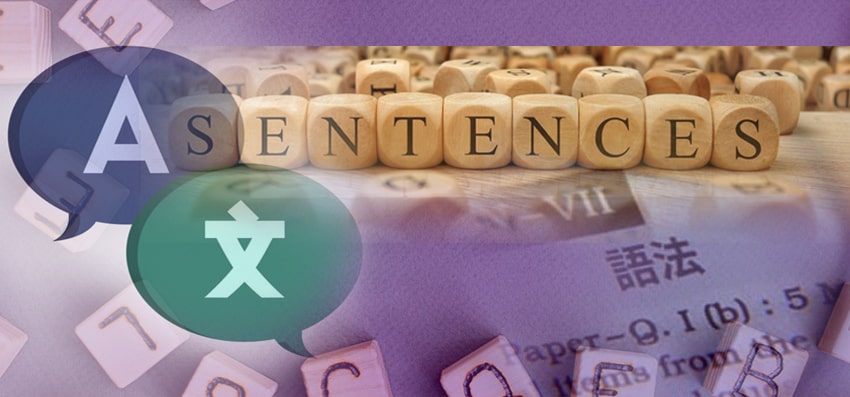In our earlier articles, we talked about the differences between English and Chinese from a general perspective, and dwelled lightly on how translators have to balance accuracy and localisation by looking at sentence structure. In this final instalment, join us as we look into how sentences are formed in both the languages; taking note of important differences to be kept in mind when translating between these two languages.
Forming sentences
When forming sentences, it is important to note the conventions used in a language as well as how information is presented.
a. Time & Sequence
Perhaps the most obvious difference between English and Chinese language structure would be in how time is told.
| At 12 noon on 4 May 2020 | 2020年5月4日中午12点 |
In Chinese, time information is systematically presented from the largest unit to the smallest unit. Hence, when mentioning a time on a specific date, the order starts with the largest unit (year), then continues with month, day, period of day, followed by the time.
The same information in English is presented in the opposite order from the smallest unit to the largest. Of course, this does not take into account the date format in American English (MMM DD, YYYY).
| She went to Tokyo from Singapore via Taipei. | 她从新加坡经由台北去到东京。 |
In the same vein, Chinese places a greater emphasis on a sequential flow of events. Here, a Chinese sentence generally presents events in the order that they take place, whereas the English sentence focuses on the destination first, before mentioning the point of origin.
b. Space
The same principle applies when describing objects in space. For example:
| 200 Huanshi Dong Lu, Guangzhou, Guangdong, China | 中国广东省广州市环市东路200号 |
| Mr. ABC, CEO, XYZ Pte Ltd | XYZ私人有限公司首席执行官ABC先生 |
When listing addresses, personnel within an organisation, or even organisational structure in Chinese, the information is presented in from the largest unit to the smallest. As seen above, the largest unit (country) is listed first, followed by the province, city, road/street and unit number. Similarly, when mentioning personnel within an organisation as well as organisational structure, it is the organisation that is listed first, followed by the role and finally the name of the person.
c. Cause/Effect
In general, English sentences tend to describe the effect first before listing the cause. In contrast, Chinese places a greater emphasis on the natural order of things, first listing the cause before describing the effect.
| He had to leave first because he had something on. | 他有事,不得不先走。 |
d. Highlighting Information
As mentioned earlier, there is a strong focus on the sequential flow of events in the Chinese language. In contrast, English tends to focus on the outcome or effect by placing it at the start of the sentence. This can also be seen in the second example in 4a above where the final destination is described first.
One of the main reasons for this difference in structure is that Chinese words do not change in form. Hence, Chinese depends strongly on the word order and the use of function words to convey meaning.
English words, on the other hand, change their forms to convey various meanings, such as quantity (the boy v. the boys), tense (he eats v. he ate), etc. This allows for greater freedom in terms of word placement and thus sentence structure.
Hence, when translating between English and Chinese, translators would need to bear in mind characteristics that are unique to each language so that their translations are not only accurate but also sound smooth and natural.
Still interested in learning more about the nitty-gritty of English and Chinese? Check out our upcoming bonus article where we take an in-depth look into the basic building blocks of any written language—words—to see how they differ between the two languages and how they affect sentences.
Find out more about how Lingua Technologies can better support your translation requirements not just in English and Chinese, but also in a wide range of languages ranging from Asian, European to Middle Eastern and Nordic languages. Visit https://www.translationsingapore.com/zh/ or send your enquiries to inquiry@translationsingapore.com.

